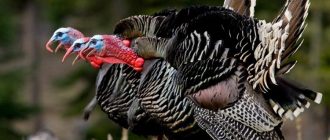Want to learn how to care for a Turkish Angora cat? Read on for essential tips and tricks that will help you provide the optimal care for Turkish Angora Cats…
The Turkish Angora cat is regarded as being one of the oldest living beings of cats in the world. It is lauded for its beauty as well as its high intellect. This unique breed was discovered in Turkey more than 1400 years ago and has since been a highly sought after breed by cat lovers from all across the world.
There are a number of things that contribute to make the Turkish Angora cat unique in the eyes of cat lovers. In recent years there was much hue and cry over the breed actually becoming extinct. The cross breeding of the Angora with the Persian in an attempt to improve the sustainability of their coat caused a decline in the population of authentic Angoras. The Turkish were however wise in keeping their population of Angoras safe from the practice of cross breeding and it is because of their efforts that the breed still exists in the world today.
Turkish Angora Cat Care
The Turkish Angora is a very graceful cat adorned with elegant features. It has a triangular face upon a muscular body with a set of slanted eyes and a long plush tail. The most striking feature of the Angora however is its long and silky coat of hair that flows naturally on the surface.
The beautiful and graceful Turkish Angora features elegant physical characteristics consisting of a long muscular body, triangular shaped face, large, slightly slanted eyes and a long, full and plushy tail. This breed is also adorned with a beautifully, luxurious coat of silky flowing hair.
Cats with long hair coats require regular grooming. However, the silky texture of the Angora’s coat makes the grooming process relatively easier. Tangles are not such a big problem for this breed as the silky texture limits the formation of tangles. In general, a Turkish Angora cat should be brushed at least two to three times in a week. This practice will help ensure that gnarls and matting does not develop on the cat’s coat.
By regularly grooming your Turkish Angora, you will also remove all loose hair that may be stuck to the coat. This will also help to rid the coat of dander and dirt, which can otherwise end up inside the digestive tract of the cat. Once digested, they can transform into hairballs and cause significant health problems for the cat.
It is also important for Turkish Angora cat owners to be aware of the cat’s temperament so as to be able to provide it with a healthy living environment. The Angora is a very playful and loving breed and is likely to make a lot of noise around the house. You can almost feel the cat converse with anyone willing to lend it an ear.
The cat needs plenty of room to run around and chase imaginary creatures. Don’t be surprised if the Angora takes a sudden leap into your lap or the lap of one of your guests. The best thing to keep the Angora occupied for hours is a cotton ball.





